 Search by Keyword
|
 "Yes It Is" picture sleeve
|
"YES IT IS"
(John Lennon - Paul McCartney)
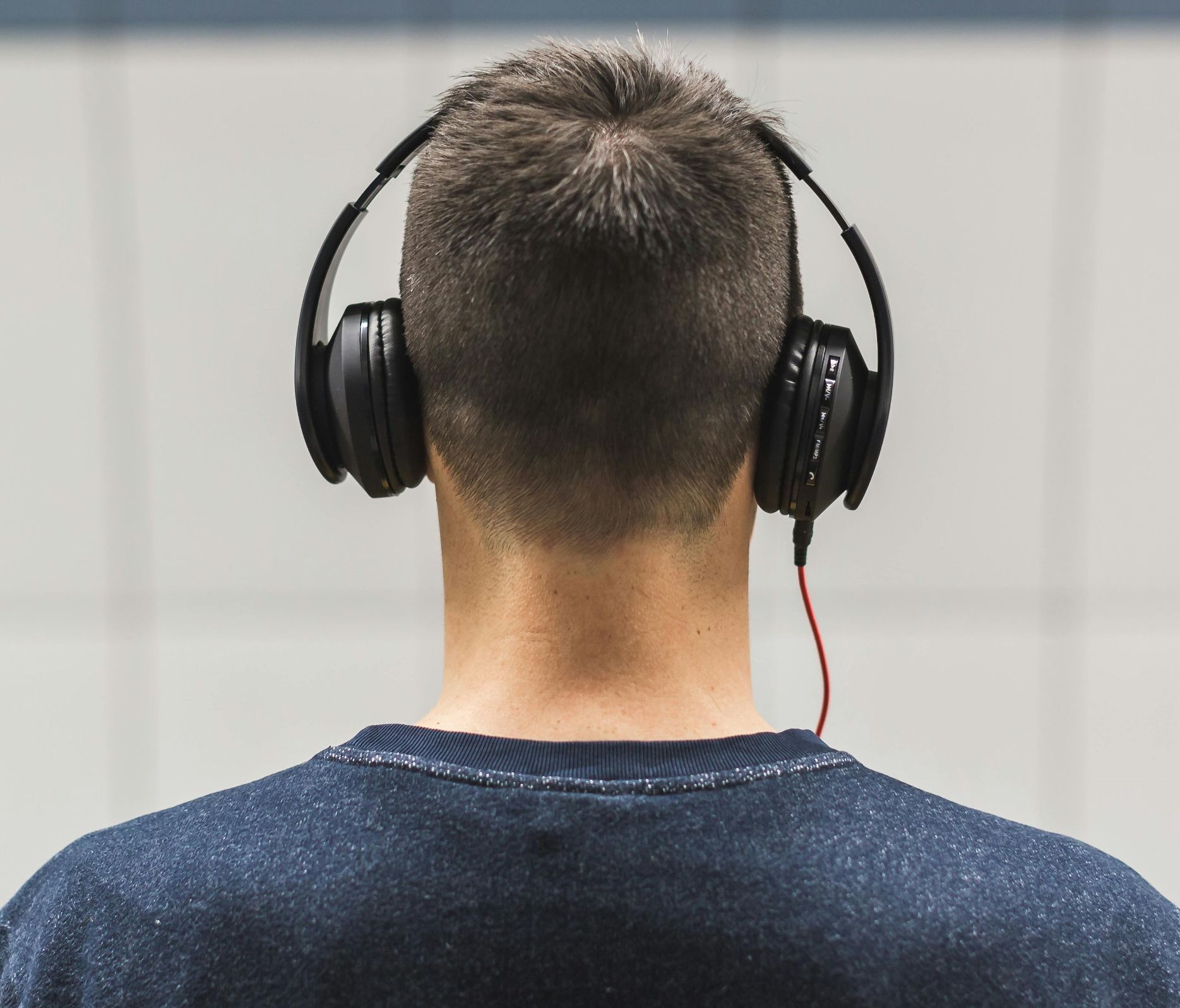 A good songwriter is someone who can stir your emotions. Someone who can make you feel what they are feeling. Someone who can express themselves in such a way that it can send chills down your spine, make you smile, make you laugh or make you cry. Someone who can, with the use of words and melody, bring out an emotion or experience that you've had and tell it in a way that you can fully relate to. A good songwriter is someone who can stir your emotions. Someone who can make you feel what they are feeling. Someone who can express themselves in such a way that it can send chills down your spine, make you smile, make you laugh or make you cry. Someone who can, with the use of words and melody, bring out an emotion or experience that you've had and tell it in a way that you can fully relate to.
 We were very fortunate to have in The Beatles two gifted songwriters who could do all of the above. By 1965, they had honed their craft to the point that they did much more than write casual pop songs. Their musical influences encompassed the Rock 'n' Roll heroes of the '50s and "girl groups" of the '60s, and grew to include artists such as Bob Dylan who used the medium of music to express substance. We were very fortunate to have in The Beatles two gifted songwriters who could do all of the above. By 1965, they had honed their craft to the point that they did much more than write casual pop songs. Their musical influences encompassed the Rock 'n' Roll heroes of the '50s and "girl groups" of the '60s, and grew to include artists such as Bob Dylan who used the medium of music to express substance.
 In like fashion, The Beatles began to use the medium in the same way. While we saw them reach in that direction the year before (as seen in "If I Fell" and "I'm A Loser" for example), 1965 appears to be the turning point for the songwriting team of Lennon and McCartney. This year saw them introduce emotional revelations such as "You've Got To Hide Your Love Away," "Help!" and "In My Life," not to mention the ultimate gut-wrencher "Yesterday." The Beatles were definitely breaking new ground, making tracks like "From Me To You" seem like child's play. With their expertise as a template, George Harrison's songwriting hit that same stride a few years later. In like fashion, The Beatles began to use the medium in the same way. While we saw them reach in that direction the year before (as seen in "If I Fell" and "I'm A Loser" for example), 1965 appears to be the turning point for the songwriting team of Lennon and McCartney. This year saw them introduce emotional revelations such as "You've Got To Hide Your Love Away," "Help!" and "In My Life," not to mention the ultimate gut-wrencher "Yesterday." The Beatles were definitely breaking new ground, making tracks like "From Me To You" seem like child's play. With their expertise as a template, George Harrison's songwriting hit that same stride a few years later.
 The first Beatles song of 1965 to touch a nerve was the b-side to their first British single "Ticket To Ride." This moving ballad was entitled "Yes It Is" which, although not directly stated, implies the death of a former love and the desire to move on with one's life. Such was the impact of the song that George Harrison was quoted at the time saying "I prefer this one. It should have been the major side." Cynthia Lennon, John's wife at the time, also stated, "This is my favorite Beatles track so far." The first Beatles song of 1965 to touch a nerve was the b-side to their first British single "Ticket To Ride." This moving ballad was entitled "Yes It Is" which, although not directly stated, implies the death of a former love and the desire to move on with one's life. Such was the impact of the song that George Harrison was quoted at the time saying "I prefer this one. It should have been the major side." Cynthia Lennon, John's wife at the time, also stated, "This is my favorite Beatles track so far."
 John Lennon's Kenwood home
|
Songwriting History
"I was there writing it with John," McCartney explains while referring to John's Kenwood home, "but it was his inspiration that I helped him finish off. 'Yes It Is' is a very fine song of John's, a ballad, unusual for John. He wrote some beautiful ballads." An estimate based on this quote would put the song at 80-20 in John's favor.
 Since it was written at Kenwood (as was much of the Lennon / McCartney catalog), we can easily place the time of writing within the near-month off The Beatles had at the beginning of 1965. Their "Another Beatles Christmas Show" production was complete by January 16th, and their first recording date of the year was February 15th. In between these dates, John and Cynthia went on a skiing vacation in St. Moritz with George Martin and future wife Judy Lockhart-Smith between January 25th and February 7th, 1965 while Paul and girlfriend Jane Asher visited Tunisia during the same time period (not to mention Ringo and Maureen getting married on February 11th, 1965). Since the song didn't appear to exist before this month, we can assume they got together to compose it sometime before or after their vacations. Since it was written at Kenwood (as was much of the Lennon / McCartney catalog), we can easily place the time of writing within the near-month off The Beatles had at the beginning of 1965. Their "Another Beatles Christmas Show" production was complete by January 16th, and their first recording date of the year was February 15th. In between these dates, John and Cynthia went on a skiing vacation in St. Moritz with George Martin and future wife Judy Lockhart-Smith between January 25th and February 7th, 1965 while Paul and girlfriend Jane Asher visited Tunisia during the same time period (not to mention Ringo and Maureen getting married on February 11th, 1965). Since the song didn't appear to exist before this month, we can assume they got together to compose it sometime before or after their vacations.
 As for John's original inspiration, he recalled in 1980 "That's me trying a re-write of 'This Boy,' but it didn't quite work." There are obvious similarities, of course, such as the waltz-like time signature, the intricate three-part harmonies in the verses and solo vocal with harmonized background vocals during the bridge, and the standard four-chord doo-wop sequence in the verses. The differences between the two songs are equally obvious, such as the mature substance of the lyrics, the more adventurous chord changes and the unusual number of measures per section, the latter element being predictably Lennon. As for John's original inspiration, he recalled in 1980 "That's me trying a re-write of 'This Boy,' but it didn't quite work." There are obvious similarities, of course, such as the waltz-like time signature, the intricate three-part harmonies in the verses and solo vocal with harmonized background vocals during the bridge, and the standard four-chord doo-wop sequence in the verses. The differences between the two songs are equally obvious, such as the mature substance of the lyrics, the more adventurous chord changes and the unusual number of measures per section, the latter element being predictably Lennon.
 Although some in The Beatles' camp loved the song, John continually dismissed it. He would scoff at the lyric "for red is the color that will make me blue," explaining this as an example of the song's "Double-Dutch words." Although some in The Beatles' camp loved the song, John continually dismissed it. He would scoff at the lyric "for red is the color that will make me blue," explaining this as an example of the song's "Double-Dutch words."
Recording History
"We did it one morning," Paul McCartney explained in 1965. "We finished 'Ticket' then we went onto this number and when we heard the playback in the evening we all thought this sounded very weird. It's unusual for us."
 Paul's facts may have been a little off, but the result surely was "unusual" considering the standard Beatles track before this time. "Ticket To Ride" was actually fully recorded the day before on their first recording session of 1965 (February 15th) while "Yes It Is" was tackled on February 16th, 1965. And it wasn't morning either, the day's session running from 2:30 to 10 pm that evening. The first two-and-a-half hours that day were spent finishing off two songs started the previous day, namely Harrison's "I Need You" and McCartney's "Another Girl." The final five hours of the day, from 5 to 10 pm, were devoted to starting and completing "Yes It Is." Paul's facts may have been a little off, but the result surely was "unusual" considering the standard Beatles track before this time. "Ticket To Ride" was actually fully recorded the day before on their first recording session of 1965 (February 15th) while "Yes It Is" was tackled on February 16th, 1965. And it wasn't morning either, the day's session running from 2:30 to 10 pm that evening. The first two-and-a-half hours that day were spent finishing off two songs started the previous day, namely Harrison's "I Need You" and McCartney's "Another Girl." The final five hours of the day, from 5 to 10 pm, were devoted to starting and completing "Yes It Is."
 The recording of the song became quite problematic for them, resulting in 14 takes to get the rhythm track down (the most takes The Beatles needed for any song in all of 1965). According to George Martin's handwritten notes, the rhythm track, which was recorded on track one of the four-track tape, consisted of John on acoustic guitar, Paul on bass guitar, and Ringo on drums. None of the takes had any vocals other than a guide vocal from John used only to keep the band in-step with the song. The recording of the song became quite problematic for them, resulting in 14 takes to get the rhythm track down (the most takes The Beatles needed for any song in all of 1965). According to George Martin's handwritten notes, the rhythm track, which was recorded on track one of the four-track tape, consisted of John on acoustic guitar, Paul on bass guitar, and Ringo on drums. None of the takes had any vocals other than a guide vocal from John used only to keep the band in-step with the song.
 Most of the takes were either incomplete or false starts, although "take one" was a complete run-through of the entire song. An interesting observation here is that the first verse was one measure short at the end and the song didn't have a complete ending yet. John just repeats the lyrics "yes it it, it's true" over and over with the intention of the song fading out. "Take two," as heard on the album "Anthology 2," still had the missing measure in the first verse and featured Lennon singing "die-de-de-die" for the bridge, but the take ended during the bridge only because he broke a string Most of the takes were either incomplete or false starts, although "take one" was a complete run-through of the entire song. An interesting observation here is that the first verse was one measure short at the end and the song didn't have a complete ending yet. John just repeats the lyrics "yes it it, it's true" over and over with the intention of the song fading out. "Take two," as heard on the album "Anthology 2," still had the missing measure in the first verse and featured Lennon singing "die-de-de-die" for the bridge, but the take ended during the bridge only because he broke a string
 After a couple of false starts, John introduced the group to adding an extra measure at the end of the first verse and then started off "take five" with a count-down of "one-two-three-bread!" After three more incomplete takes, "take nine" made it through the entire song to reveal that they had finally written the full ending. They eventually made it to "take 14," which was deemed suitable for overdubs. This rhythm track took a complete two hours to record, from 5 to 7 pm. After a couple of false starts, John introduced the group to adding an extra measure at the end of the first verse and then started off "take five" with a count-down of "one-two-three-bread!" After three more incomplete takes, "take nine" made it through the entire song to reveal that they had finally written the full ending. They eventually made it to "take 14," which was deemed suitable for overdubs. This rhythm track took a complete two hours to record, from 5 to 7 pm.
 It took the following three hours, from 7 to 10 pm, to record all of the overdubs needed to complete the song. The first step was for George to overdub the chords of the song onto track two of the tape with his Gretsch electric guitar using a foot-controlled volume pedal, the same device he had used that same day as an overdub on "I Need You." This device was connected to the volume of the guitar to create swells of volume after the chord or note was played. When the pedal is used in connection with the tone of the guitar, as by the likes of Jimi Hendrix and Cream, the result became what was famously referred to as a wah-wah pedal. It took the following three hours, from 7 to 10 pm, to record all of the overdubs needed to complete the song. The first step was for George to overdub the chords of the song onto track two of the tape with his Gretsch electric guitar using a foot-controlled volume pedal, the same device he had used that same day as an overdub on "I Need You." This device was connected to the volume of the guitar to create swells of volume after the chord or note was played. When the pedal is used in connection with the tone of the guitar, as by the likes of Jimi Hendrix and Cream, the result became what was famously referred to as a wah-wah pedal.
 Then, onto track three, the excellent three-part harmony was perfected. John, Paul and George first had to get the harmonies down and rehearse them, which they did with the assistance of producer George Martin. "They always experimented with close harmony singing," George Martin explains, "all I did was change the odd note." It appears that many odd notes were changed in this arrangement because these harmonies lifted and dove in ways that no other Beatles harmonies had done before. Then, onto track three, the excellent three-part harmony was perfected. John, Paul and George first had to get the harmonies down and rehearse them, which they did with the assistance of producer George Martin. "They always experimented with close harmony singing," George Martin explains, "all I did was change the odd note." It appears that many odd notes were changed in this arrangement because these harmonies lifted and dove in ways that no other Beatles harmonies had done before.
 Many unnumbered attempts at the harmonies were tried until they finally arrived at what was deemed to be acceptable. What made it especially cumbersome is that John, Paul and George insisted on hovering around a single microphone and perform these newly-learned harmonies live. After this, onto track four of the tape, John double-tracked his vocals during the bridge and George overdubbed volume pedal guitar passages in between vocal lines in the song. Also performed simultaneously on track four was Paul playing cymbals and, as indicated in George Martin's handwritten notes, a slight Hammond organ track which may have been played by George Martin himself, apparently recorded so quietly as to not be detected in the finished product. By 10 pm, the weary Beatles had completed three songs in one day. Many unnumbered attempts at the harmonies were tried until they finally arrived at what was deemed to be acceptable. What made it especially cumbersome is that John, Paul and George insisted on hovering around a single microphone and perform these newly-learned harmonies live. After this, onto track four of the tape, John double-tracked his vocals during the bridge and George overdubbed volume pedal guitar passages in between vocal lines in the song. Also performed simultaneously on track four was Paul playing cymbals and, as indicated in George Martin's handwritten notes, a slight Hammond organ track which may have been played by George Martin himself, apparently recorded so quietly as to not be detected in the finished product. By 10 pm, the weary Beatles had completed three songs in one day.
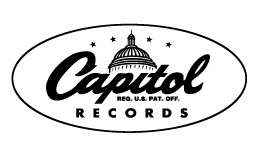 The mono mix was made two days later on February 18th in the control room of EMI Studio Two by producer George Martin and engineers Norman Smith and Ken Scott. With a slight bit of reverb added to create some depth, this was the mix used on the British single. Capitol Records added a substantial amount of reverb to the American single. The mono mix was made two days later on February 18th in the control room of EMI Studio Two by producer George Martin and engineers Norman Smith and Ken Scott. With a slight bit of reverb added to create some depth, this was the mix used on the British single. Capitol Records added a substantial amount of reverb to the American single.
 On February 23rd, 1965, a stereo mix of the song was made in the control room of EMI Studio Two by engineers Norman Smith and Malcolm Davies. Notice that George Martin didn't even bother to show up for this stereo mixing session for the current Beatles songs since mono was the most important format of the day. Normally a song that was only intended as a single, as "Yes It Is" proved to be, didn't need a stereo mix at all. At this early stage, though, the verdict apparently was still out as to whether the song would be included in the upcoming soundtrack album or not, or whether it would be issued as a single or not. On February 23rd, 1965, a stereo mix of the song was made in the control room of EMI Studio Two by engineers Norman Smith and Malcolm Davies. Notice that George Martin didn't even bother to show up for this stereo mixing session for the current Beatles songs since mono was the most important format of the day. Normally a song that was only intended as a single, as "Yes It Is" proved to be, didn't need a stereo mix at all. At this early stage, though, the verdict apparently was still out as to whether the song would be included in the upcoming soundtrack album or not, or whether it would be issued as a single or not.
 Be that as it may, when it was decided that the song would be the b-side of the next Beatles single, this stereo mix was hidden very well in the EMI vaults. Capitol didn't receive a copy of this stereo mix, so when they included it on their make-shift "Beatles VI" album, they created a "duophonic" stereo mix from the mono mix they received, adding further reverb in the process. And even though "Yes It Is" was included in compilation albums in Britain and America in the '70s, the stereo mix still didn't surface. It wasn't until 1986 during a short-lived promotional tape offer for Heineken Beer in Britain that the stereo mix was used. Finally, with the compact disc release of the song on "Past Masters, Volume One," the stereo mix made on February 23rd, 1965 was available for all to hear. Be that as it may, when it was decided that the song would be the b-side of the next Beatles single, this stereo mix was hidden very well in the EMI vaults. Capitol didn't receive a copy of this stereo mix, so when they included it on their make-shift "Beatles VI" album, they created a "duophonic" stereo mix from the mono mix they received, adding further reverb in the process. And even though "Yes It Is" was included in compilation albums in Britain and America in the '70s, the stereo mix still didn't surface. It wasn't until 1986 during a short-lived promotional tape offer for Heineken Beer in Britain that the stereo mix was used. Finally, with the compact disc release of the song on "Past Masters, Volume One," the stereo mix made on February 23rd, 1965 was available for all to hear.
Song Structure and Style
"Yes It Is" follows a pattern similar to that of most Beatles songs up to this point, namely the 'verse/ verse/ bridge/ verse' structure (or aaba). Deeming an instrumental section not appropriate, they followed their usual habit of repeating the bridge and final verse which also contains a suitable conclusion.
 The obvious comparison to their 1963 classic "This Boy," substantiated by Lennon himself, will be analyzed in this review. While some features are very similar, there are more dissimilarities when you really look closely. A year-and-a-half of growth and maturation as songwriters proves that, instead of "Yes It Is" being just a simple "re-write" as John claimed, it's more of an update. The obvious comparison to their 1963 classic "This Boy," substantiated by Lennon himself, will be analyzed in this review. While some features are very similar, there are more dissimilarities when you really look closely. A year-and-a-half of growth and maturation as songwriters proves that, instead of "Yes It Is" being just a simple "re-write" as John claimed, it's more of an update.
The first thing we hear in the song is Paul's introductory bass note which precedes the two-measure introduction to the song. This note is so quiet that a considerable amount of tape hiss begins the song, although the remastered version on the 2009 "Past Masters" release removes a degree of this. The introduction then begins which introduces the full instrumentation of the song, with acoustic rhythm guitar, snare/hi-hat accents and volume pedal guitar work. The home key of E is established right from the start of this introduction.
 The first verse then begins on the one-beat of the next measure with the appearance of their intricate three-part harmony. This is the only verse in the song that is an odd fifteen-measures long, created that way by John introducing an extra measure at the end for breathing space before the second verse begins. Unlike Lennon's guide vocal, they end up taking advantage of this extra measure by stretching out the harmonizing of the song's title in a triplet-like style. George's volume pedal chord changes all land on the one-beat of each measure, but he overdubs lilting accent notes whenever there is a lull in the vocal work. The first verse then begins on the one-beat of the next measure with the appearance of their intricate three-part harmony. This is the only verse in the song that is an odd fifteen-measures long, created that way by John introducing an extra measure at the end for breathing space before the second verse begins. Unlike Lennon's guide vocal, they end up taking advantage of this extra measure by stretching out the harmonizing of the song's title in a triplet-like style. George's volume pedal chord changes all land on the one-beat of each measure, but he overdubs lilting accent notes whenever there is a lull in the vocal work.
 The similarities with "This Boy" in the verses amount to the three-part harmony throughout and the doo-wop chord pattern used. However, the harmonies are much more unpredictable, weaving up and down around John's lead, while the doo-wop chord pattern in only used in the first four measures and is then complimented with much more extraordinary progressions. Another dissimilarity is that there are no "Beatles breaks" in the song as there are in every verse and bridge of "This Boy." The similarities with "This Boy" in the verses amount to the three-part harmony throughout and the doo-wop chord pattern used. However, the harmonies are much more unpredictable, weaving up and down around John's lead, while the doo-wop chord pattern in only used in the first four measures and is then complimented with much more extraordinary progressions. Another dissimilarity is that there are no "Beatles breaks" in the song as there are in every verse and bridge of "This Boy."
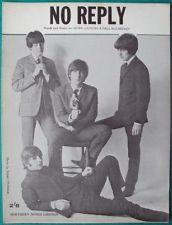 The second verse is virtually the same except that an additional measure is deemed necessary as a transition to the bridge that follows, resulting in a more traditional sixteen-measure verse. The ten-measure bridge then follows, which reveals John's solo vocals for the first six measures. The first four measures display a melodic passage with a chord pattern that appears to repeat itself afterward, but instead is cut in half at the seventh measure by John's dramatic revelation "it's my pride, yes it is..." At this point the chord pattern shifts unexpectedly as Paul and George chime in with vibrant "aaah" background vocals to set up the four-measure segue into a third verse. All-in-all, the bridge is the emotional high-point of the song, as is their more common trick in recent compositions (such as "No Reply" and "I Don't Want To Spoil The Party"). The second verse is virtually the same except that an additional measure is deemed necessary as a transition to the bridge that follows, resulting in a more traditional sixteen-measure verse. The ten-measure bridge then follows, which reveals John's solo vocals for the first six measures. The first four measures display a melodic passage with a chord pattern that appears to repeat itself afterward, but instead is cut in half at the seventh measure by John's dramatic revelation "it's my pride, yes it is..." At this point the chord pattern shifts unexpectedly as Paul and George chime in with vibrant "aaah" background vocals to set up the four-measure segue into a third verse. All-in-all, the bridge is the emotional high-point of the song, as is their more common trick in recent compositions (such as "No Reply" and "I Don't Want To Spoil The Party").
 The comparison with "This Boy" in the bridge section is also noteworthy, although different in many ways. Both songs display John singing solo vocals accompanied by background vocals from Paul and George, as well as the bridge being the emotional high-point. Differences include the shorter duration of the bridge in "Yes It Is" as well as more surprising twists in choice of chord changes and patterns. Interesting also is that the bridge and final verse are not repeated in "This Boy," so while the standard structure of both songs are the same, the emotional impact of the current song is accentuated by the repeat of the passionate bridge. The comparison with "This Boy" in the bridge section is also noteworthy, although different in many ways. Both songs display John singing solo vocals accompanied by background vocals from Paul and George, as well as the bridge being the emotional high-point. Differences include the shorter duration of the bridge in "Yes It Is" as well as more surprising twists in choice of chord changes and patterns. Interesting also is that the bridge and final verse are not repeated in "This Boy," so while the standard structure of both songs are the same, the emotional impact of the current song is accentuated by the repeat of the passionate bridge.
 The story actually is completed with the third verse which, while identical to the second verse in arrangement and number of measures, contains the ultimate lyrical impact of the song. This is followed by a repeat of the bridge and third verse, although this final verse is extended to seventeen measures to include a fitting conclusion to the song. The surprising G# major chord during this conclusion (on the word "true") gives the song its final emotional jolt. Thereafter it comes to a satisfying close with George's final melodic volume pedal riff hanging in the air. While "This Boy" fades off into the sunset with an ambiguity of whether the girl will take him back again, "Yes It Is" has a complete ending which gives a sense of finality to the story. The story actually is completed with the third verse which, while identical to the second verse in arrangement and number of measures, contains the ultimate lyrical impact of the song. This is followed by a repeat of the bridge and third verse, although this final verse is extended to seventeen measures to include a fitting conclusion to the song. The surprising G# major chord during this conclusion (on the word "true") gives the song its final emotional jolt. Thereafter it comes to a satisfying close with George's final melodic volume pedal riff hanging in the air. While "This Boy" fades off into the sunset with an ambiguity of whether the girl will take him back again, "Yes It Is" has a complete ending which gives a sense of finality to the story.
 John, as lead vocalist and rhythm guitarist, is the stand-out performer on the song, as he is by sheer percentage during the early Beatles days (although this will begin to switch very soon). His impassioned vocal work, especially noteworthy in the bridge, gives the impression that he feels very strongly about these lyrics, whether they're clearly stated or not. The guitar rhythm he uses throughout the song is identical to what he played in "This Boy," which may have indeed motivated his comparative opinion of the song, although in this case his guitar is buried somewhat in the mix. John, as lead vocalist and rhythm guitarist, is the stand-out performer on the song, as he is by sheer percentage during the early Beatles days (although this will begin to switch very soon). His impassioned vocal work, especially noteworthy in the bridge, gives the impression that he feels very strongly about these lyrics, whether they're clearly stated or not. The guitar rhythm he uses throughout the song is identical to what he played in "This Boy," which may have indeed motivated his comparative opinion of the song, although in this case his guitar is buried somewhat in the mix.
 Paul's bass work is also hard to distinguish in this song (turn up the bass on your system to hear it better) but is played with the appropriate simplicity to highlight the lyrics and vocal work. Speaking of vocals, you can always count on McCartney for hitting the harmonies correctly, even with the complex layout that George Martin prescribed for the boys. Paul's bass work is also hard to distinguish in this song (turn up the bass on your system to hear it better) but is played with the appropriate simplicity to highlight the lyrics and vocal work. Speaking of vocals, you can always count on McCartney for hitting the harmonies correctly, even with the complex layout that George Martin prescribed for the boys.
 However, George Harrison seems to be the "weak link" when it comes to harmony on this song. Notice, for instance, the off-sounding harmonies at the end of the first two phrases of the first verse (on the word "tonight"). As the song progresses, however, the three-part harmony is quite impressive. After many attempts with them singing this overdub live into one microphone, it was obviously the best they could get with this complicated vocal arrangement. However, George Harrison seems to be the "weak link" when it comes to harmony on this song. Notice, for instance, the off-sounding harmonies at the end of the first two phrases of the first verse (on the word "tonight"). As the song progresses, however, the three-part harmony is quite impressive. After many attempts with them singing this overdub live into one microphone, it was obviously the best they could get with this complicated vocal arrangement.
 George's strong suit is his guitar work. While the other two Beatles songs he uses the volume pedal for ("I Need You" and "Wait") come across as somewhat awkward, his use of this effect on "Yes It Is" provides an eerie-yet-haunting quality to the song. Here we see another unique element of this song as opposed to "This Boy." A job well done, George. George's strong suit is his guitar work. While the other two Beatles songs he uses the volume pedal for ("I Need You" and "Wait") come across as somewhat awkward, his use of this effect on "Yes It Is" provides an eerie-yet-haunting quality to the song. Here we see another unique element of this song as opposed to "This Boy." A job well done, George.
While most sources claim Ringo is playing a tambourine on this track, close listening reveals the sound of a slightly-open hi-hit and snare being hit on the off-beat of every measure, Paul accentuating the cymbal as an overdub. While this made for an easy recording session for him, Starr's steady hand and perfect sense of timing worked in favor of the song and provided another ingredient different from "This Boy."
 The song's lyrics are very telling but ambiguous at the same time. The way the song is presented gives the impression that a deep emotional message is being revealed, although the actual words leave a lot unexplained. What we do know is that the singer is attempting to start a new relationship with someone while the embers of an old one are still burning. He emphatically instructs the new woman not to "wear red tonight," explaining that "red is the color that my baby wore." This is the first indication that his previous love had died, since no right-thinking man would call a previous flame his "baby" unless possibly she had passed away. The song's lyrics are very telling but ambiguous at the same time. The way the song is presented gives the impression that a deep emotional message is being revealed, although the actual words leave a lot unexplained. What we do know is that the singer is attempting to start a new relationship with someone while the embers of an old one are still burning. He emphatically instructs the new woman not to "wear red tonight," explaining that "red is the color that my baby wore." This is the first indication that his previous love had died, since no right-thinking man would call a previous flame his "baby" unless possibly she had passed away.
 She apparently wore red quite regularly since "everybody knows" this fact and it would most likely cause talk if they were seen together. The line "I would remember all the things we planned" also hints at her death as well as tugging on the heartstrings of anyone who has lost a loved one in death. However, the bridge, emotionally sung solo by John, honestly reveals the gist of the matter and sums up the message of the song. "I could be happy with you by my side, if I could forget her," with the final word slurred downward has a saddened undertone. It appears that his dilemma will take much time to get over. But he knows that, mysteriously, it's his "pride" that is getting in the way of starting a new relationship. She apparently wore red quite regularly since "everybody knows" this fact and it would most likely cause talk if they were seen together. The line "I would remember all the things we planned" also hints at her death as well as tugging on the heartstrings of anyone who has lost a loved one in death. However, the bridge, emotionally sung solo by John, honestly reveals the gist of the matter and sums up the message of the song. "I could be happy with you by my side, if I could forget her," with the final word slurred downward has a saddened undertone. It appears that his dilemma will take much time to get over. But he knows that, mysteriously, it's his "pride" that is getting in the way of starting a new relationship.
 The clinching phrase of the song is revealed in the final verse, which is "red is the color that will make me blue." While "Baby's In Black" used this exact play on words ("baby's in black and I'm feeling blue"), The Beatles take it a step further. They add the phrase "in spite of you," that is, even though his new love is right there and willing to see him through his sorrow, her wearing red will only extend his sadness. The clinching phrase of the song is revealed in the final verse, which is "red is the color that will make me blue." While "Baby's In Black" used this exact play on words ("baby's in black and I'm feeling blue"), The Beatles take it a step further. They add the phrase "in spite of you," that is, even though his new love is right there and willing to see him through his sorrow, her wearing red will only extend his sadness.
 There are still unexplained elements of the lyrics, such as the often repeated phrase "it's true," which in the long run may only be a meaningless two-syllable filler. Even choosing "Yes It Is" as a title is puzzling because, while it's far from being descriptive of the lyrical content, we're not even sure what "it" is in the first place. Is "it" the color his former lover wore, or is it his "pride" as explained in the bridge? Many books explain the lyrics in many different ways as if their interpretation is the only one possible, so this may be another example of less-is-more in regard to songwriting. Trying to understand the meaning only adds to the mystique of a song, as The Beatles explored even further in years to come. There are still unexplained elements of the lyrics, such as the often repeated phrase "it's true," which in the long run may only be a meaningless two-syllable filler. Even choosing "Yes It Is" as a title is puzzling because, while it's far from being descriptive of the lyrical content, we're not even sure what "it" is in the first place. Is "it" the color his former lover wore, or is it his "pride" as explained in the bridge? Many books explain the lyrics in many different ways as if their interpretation is the only one possible, so this may be another example of less-is-more in regard to songwriting. Trying to understand the meaning only adds to the mystique of a song, as The Beatles explored even further in years to come.
American Releases
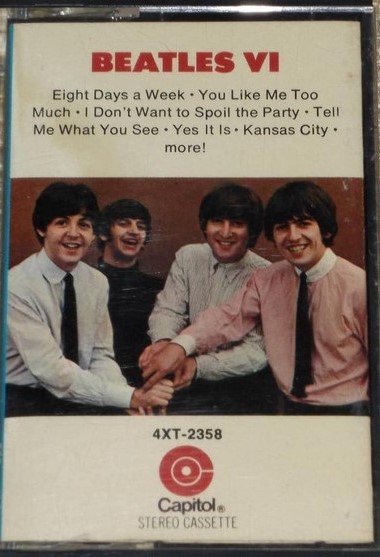 America first heard "Yes It Is" only ten days after Britain did. It was the b-side to the Capitol single "Ticket To Ride," which was released on April 19th, 1965, just as their previous #1 single "Eight Days A Week" was falling out of the top ten. "Yes It Is" got enough airplay to chart on its own at #46 on the Billboard Hot 100. America first heard "Yes It Is" only ten days after Britain did. It was the b-side to the Capitol single "Ticket To Ride," which was released on April 19th, 1965, just as their previous #1 single "Eight Days A Week" was falling out of the top ten. "Yes It Is" got enough airplay to chart on its own at #46 on the Billboard Hot 100.
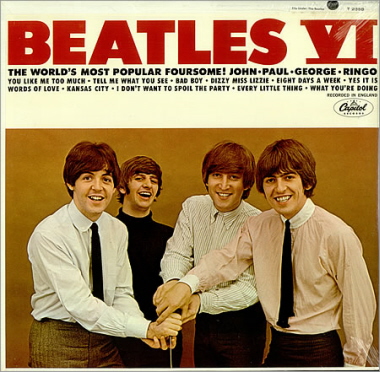 Although Capitol only had the mono mix of the song, that didn't stop them from including it on their next make-shift album "Beatles VI." Released on June 14th, 1965, it topped the Billboard albums chart for six weeks and sold over a million copies. This album was then released on compact disc on January 21st, 2014, both the mono and stereo versions of the album contained on one CD. Although Capitol only had the mono mix of the song, that didn't stop them from including it on their next make-shift album "Beatles VI." Released on June 14th, 1965, it topped the Billboard albums chart for six weeks and sold over a million copies. This album was then released on compact disc on January 21st, 2014, both the mono and stereo versions of the album contained on one CD.
 Sometime in 1967, Capitol released Beatles music on a brand new but short-lived format called "Playtapes." These tape cartridges did not have the capability to include entire albums, so two seperate truncated four-song versions of "Beatles VI" were released in this portable format, "Yes It Is" being on one of them. These "Playtapes" are highly collectable today. Sometime in 1967, Capitol released Beatles music on a brand new but short-lived format called "Playtapes." These tape cartridges did not have the capability to include entire albums, so two seperate truncated four-song versions of "Beatles VI" were released in this portable format, "Yes It Is" being on one of them. These "Playtapes" are highly collectable today.
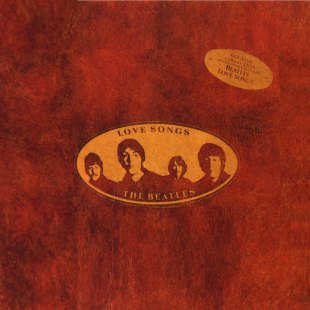 The next US release of the song didn't occur until October 21st, 1977, on the double-album compilation "Love Songs." The stereo mix of the song remained in the EMI vaults at this time, but Capitol still saw fit to create a second "duophonic" stereo mix for this album from the existing mono mix they received back in 1965. This elegantly packaged album peaked at #24 on the Billboard album chart and stayed in print until the late '80s. The next US release of the song didn't occur until October 21st, 1977, on the double-album compilation "Love Songs." The stereo mix of the song remained in the EMI vaults at this time, but Capitol still saw fit to create a second "duophonic" stereo mix for this album from the existing mono mix they received back in 1965. This elegantly packaged album peaked at #24 on the Billboard album chart and stayed in print until the late '80s.
 Because of EMI's decision to release a box set that included all of the British Beatles albums as well as an additional album entitled "Rarities" that included songs that did not appear on any British Beatles album, Capitol had initially decided to release this album in America. 2,000 promotional copies of this album were manufactured (#SPRO-8969) and then another unlimited number of advance copies (ESN-SN-12009) were printed in the fall of 1979. "Yes It Is" was included on this proposed album which was decided to be abondoned due to the fact that this and most of the songs contained therein were available on other Beatles albums in the US at the time. These promotional albums are very collectible today. Because of EMI's decision to release a box set that included all of the British Beatles albums as well as an additional album entitled "Rarities" that included songs that did not appear on any British Beatles album, Capitol had initially decided to release this album in America. 2,000 promotional copies of this album were manufactured (#SPRO-8969) and then another unlimited number of advance copies (ESN-SN-12009) were printed in the fall of 1979. "Yes It Is" was included on this proposed album which was decided to be abondoned due to the fact that this and most of the songs contained therein were available on other Beatles albums in the US at the time. These promotional albums are very collectible today.
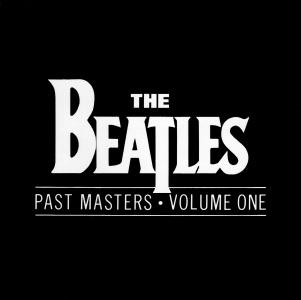 March 7th, 1988 was the official release of "Yes It Is" in stereo, as the original stereo mix made on February 23rd, 1965 was included on the compact disc "Past Masters, Volume One." Both volumes of "Past Masters" were then combined to form a double-album for vinyl release in the US on October 24th, 1988. This double-disc set was then remastered and released on CD on September 9th, 2009 and on vinyl on November 12th, 2012. March 7th, 1988 was the official release of "Yes It Is" in stereo, as the original stereo mix made on February 23rd, 1965 was included on the compact disc "Past Masters, Volume One." Both volumes of "Past Masters" were then combined to form a double-album for vinyl release in the US on October 24th, 1988. This double-disc set was then remastered and released on CD on September 9th, 2009 and on vinyl on November 12th, 2012.
 The next release of "Yes It Is" was on "Anthology 2," which was released on March 19th, 1996. This was the second track of the double-CD set, following right after the debut release of the new Beatles track "Real Love." George Martin realized the stark beauty of the song as heard on the original "take two" as recorded on February 16th, 1965 with John's guide vocal accompanying the simple rhythm track. Just before John breaks his guitar string during the bridge, George Martin fades in the last half of the finished "take 14" with the excellently performed vocal harmony overdub. This album debuted at #1 on the Billboard album chart and sold over two million copies. The next release of "Yes It Is" was on "Anthology 2," which was released on March 19th, 1996. This was the second track of the double-CD set, following right after the debut release of the new Beatles track "Real Love." George Martin realized the stark beauty of the song as heard on the original "take two" as recorded on February 16th, 1965 with John's guide vocal accompanying the simple rhythm track. Just before John breaks his guitar string during the bridge, George Martin fades in the last half of the finished "take 14" with the excellently performed vocal harmony overdub. This album debuted at #1 on the Billboard album chart and sold over two million copies.
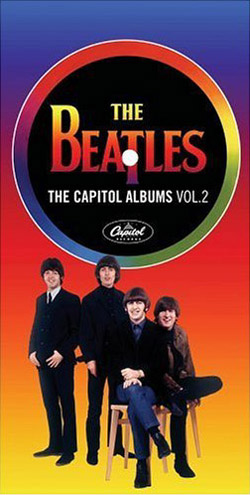 Not to be forgotten is the box set "The Capitol Albums, Vol. 2," which was released on April 11th, 2006. This four disc set featured the entire "Beatles VI" album, including "Yes It Is," in both stereo and mono, although the stereo version is actually the "duophonic" stereo mix created from the mono mix as contained on the original 1965 album. Capitol mistakenly presented a "mono type-B" fold-down mono mix for the entire "Beatles VI" album, which was a method that combined both the left and right channels of the stereo mix to create a mono mix. Therefore, the mono mix of "Yes It Is" in this set was initially prepared in this way, in this case created from the "duophonic" stereo mix described above, the error being corrected on subsequent pressings. Not to be forgotten is the box set "The Capitol Albums, Vol. 2," which was released on April 11th, 2006. This four disc set featured the entire "Beatles VI" album, including "Yes It Is," in both stereo and mono, although the stereo version is actually the "duophonic" stereo mix created from the mono mix as contained on the original 1965 album. Capitol mistakenly presented a "mono type-B" fold-down mono mix for the entire "Beatles VI" album, which was a method that combined both the left and right channels of the stereo mix to create a mono mix. Therefore, the mono mix of "Yes It Is" in this set was initially prepared in this way, in this case created from the "duophonic" stereo mix described above, the error being corrected on subsequent pressings.
 On September 9th, 2009, the newly remastered mono mix of “Yes It Is” was released in the compact disc box set “The Beatles In Mono.” The song was featured on the disc “Mono Masters” which was included in this set, which also received a vinyl release on September 9th, 2014. On September 9th, 2009, the newly remastered mono mix of “Yes It Is” was released in the compact disc box set “The Beatles In Mono.” The song was featured on the disc “Mono Masters” which was included in this set, which also received a vinyl release on September 9th, 2014.
Live Performances
The Beatles realized from the cumbersome process of recording the song that it would be extremely difficult to reproduce it live, so they chose not to include it in any concert performances or BBC radio recordings. However, the usual pattern of promoting both sides of their current single led them to lip-sync the song three times for British television.
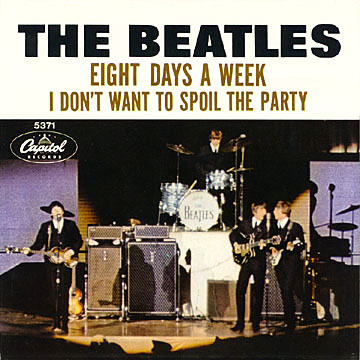 The first was taped on March 28th, 1965 for the show that brought them to national television fame for the first time in January 1963, namely "Thank Your Lucky Stars." "Eight Days A Week," "Yes It Is" and "Ticket To Ride" were all taped on this day for transmission on April 3rd. The second was taped on April 10th, 1965 for the British show "Top Of The Pops," which was broadcast with "Ticket To Ride" on April 15th, and then by itself on April 22nd. Finally on April 11th, 1965, they lip-synced the song one last time, along with "Ticket To Ride," for the live broadcast of "The Eamonn Andrews Show." The first was taped on March 28th, 1965 for the show that brought them to national television fame for the first time in January 1963, namely "Thank Your Lucky Stars." "Eight Days A Week," "Yes It Is" and "Ticket To Ride" were all taped on this day for transmission on April 3rd. The second was taped on April 10th, 1965 for the British show "Top Of The Pops," which was broadcast with "Ticket To Ride" on April 15th, and then by itself on April 22nd. Finally on April 11th, 1965, they lip-synced the song one last time, along with "Ticket To Ride," for the live broadcast of "The Eamonn Andrews Show."
Probably due to Lennon's misgivings about the song, they dropped it forever from their repertoire at this point, never to touch it again.
Conclusion
 John Lennon was known to be very critical of songs he had written, especially those considered favorites by most Beatles fans. His open distaste for songs like "Run For Your Life," "Tomorrow Never Knows" and "Cry Baby Cry" leave most of us scratching our heads. The closest thing to a positive remark regarding "Yes It Is" was his 1965 statement: "It's the slowest we have ever put out, but it has a beat." Other than that, he remembered the song as something "that didn't quite work." In my humble opinion, as well as any others I've asked, it has a haunting, emotional beauty that can easily send a chill down your spine. But I guess everyone is entitled to their opinion...even the song's writer. John Lennon was known to be very critical of songs he had written, especially those considered favorites by most Beatles fans. His open distaste for songs like "Run For Your Life," "Tomorrow Never Knows" and "Cry Baby Cry" leave most of us scratching our heads. The closest thing to a positive remark regarding "Yes It Is" was his 1965 statement: "It's the slowest we have ever put out, but it has a beat." Other than that, he remembered the song as something "that didn't quite work." In my humble opinion, as well as any others I've asked, it has a haunting, emotional beauty that can easily send a chill down your spine. But I guess everyone is entitled to their opinion...even the song's writer.
Song Summary
"Yes It Is"
Written by: John Lennon / Paul McCartney
Instrumentation (most likely):
- John Lennon - Lead Vocals, Rhythm Guitar (1964 Ramirez A-1 Segovia)
- Paul McCartney - Harmony Vocals, Bass Guitar (1963 Hofner 500/1), Drums (1964, Ludwig Super Class ic Black Oyster Pearl)
- George Harrison - Harmony Vocals, Lead and Rhythm Guitar (1963 Gretsch 6119 Tennessean)
- Ringo Starr - Drums (1964 Ludwig Super Classic Black Oyster Pearl
- George Martin - Organ (Hammond RT-3 ?)
Written and compiled by Dave Rybaczewski
|
IF YOU WOULD LIKE TO MAKE A DONATION TO KEEP THIS WEBSITE UP AND RUNNING, PLEASE CLICK BELOW!
Sign Up Below for our MONTHLY BEATLES TRIVIA QUIZ!
|